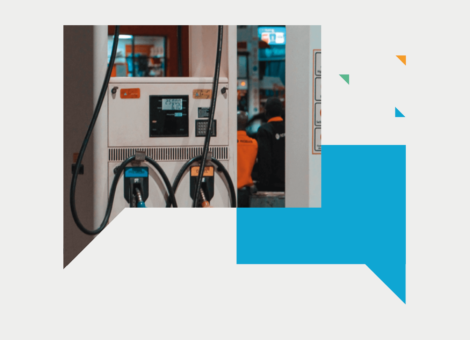How fuel pricing software outpaces spreadsheets in the race for efficiency

In this three part blog series, we’ll examine the issues that spreadsheets can cause for Fuel Pricing processes and the wider fuel retail organization, as well as the considerations you need to make if you are thinking about switching to a fuel pricing software system.
After all — moving away from spreadsheets isn’t always a clear-cut decision or a straightforward process.
The race for efficiency
Whether you make multiple fuel price changes a day, or one fuel price change per week — it’s essential to be able to assess your data, make a price decision and implement it quickly. The fuel retailers that are poised to react quickly to market changes are the first to reap the rewards.
How does excel shape up?
For implementing a simple pricing strategy, such as “Competitor price + 1c”, a spreadsheet will be entirely capable of calculating acceptable prices for each site. We’ve seen many cases where far more complex pricing strategies have been applied using Excel — but regardless of how simple or complex your strategy is — Excel can’t implement it efficiently.
And in a fast-moving market like fuel retail, efficiency is essential.
Data entry into spreadsheets is often input by hand, taking time and increasing the chances of errors. Once calculated, prices are manually checked and sent via SMS or emailed over to sites to be entered into POS and signage systems. On a small scale, this process is fine. But it isn’t scalable. If your organization has growth targets and plans to build or acquire new stores, it can quickly get out of hand.
Fuel pricing software allows you to ingest data from different channels automatically. It can immediately calculate a new price (based on rules and criteria that you set) and automatically send it to your store’s POS system — making the entire process streamlined, repeatable, and fast.
Rapidly implementing prices through POS integration improves profit and increases your likelihood of hitting volume and margin targets. For some fuel retailers, implementing price changes can take hours, and a verbal confirmation from a store manager is all they have to trust that prices have taken effect. Prices hitting pumps hours after they have been submitted only result in fuel retailers missing out on revenue due to lack of speed.
During one of our fuel retail panel discussions, one fast-growing US chain told us:
“Historically pricing once per day was common but now if you are not pricing multiple times per day, you are leaving a lot on the table. With volatility in the market, you don’t want to be the one that is sitting 20 cents higher than competition. We are looking at competitive prices all throughout the day, watching the markets, studying competitor shifts in behavior and using all these data points to make quick decisions. Being able to trust the data is key and helps automate a lot of these decisions based on the parameters that we have set.”
Fuel pricing software saves time by eliminating the need for duplicate efforts, which is often the case when using spreadsheets. Many fuel retailers have multiple spreadsheets to keep track of different fuel price calculations and historical records. And as a result, the same data is entered numerous times in different places, which is not the best use of anyone’s time and increases the risk of human error.
A spreadsheet is a prevalent tool to manage fuel pricing processes. However large your organization and advanced your processes, you’ll likely utilise spreadsheets in some capacity. And despite our calibre as a leading Fuel Pricing software specialist, here at Kalibrate we understand your reliance on spreadsheets and don’t expect you to banish them altogether. However, many operational processes will benefit by being moved away from spreadsheets and onto a more streamlined technology-led process.
Download the Software vs spreadsheets eBook to understand the pros and cons and learn what to consider if you’re thinking about switching to a fuel pricing software solution.
Read more articles about:
Fuel pricingSubscribe and get the latest updates
You may unsubscribe from our mailing list at any time. To understand how and why we process your data, please see our Privacy & Cookies Policy
Related posts
Fuel pricing
Fuel pricing: spreadsheets vs software
Why many fuel retailers still rely on spreadsheets — and considerations to make before switching to software

Fuel pricing
On-demand demo of Kalibrate Fuel Pricing
Fast, intelligent, agile fuel pricing across your entire network. Watch the on-demand video for a demo of Kalibrate...


